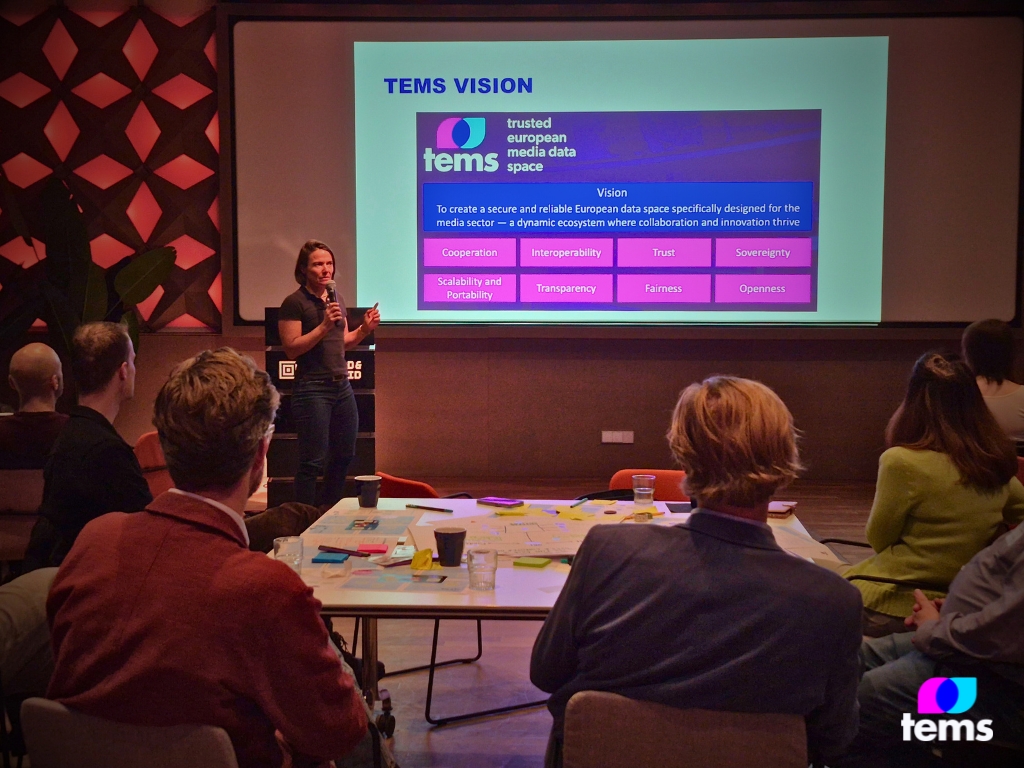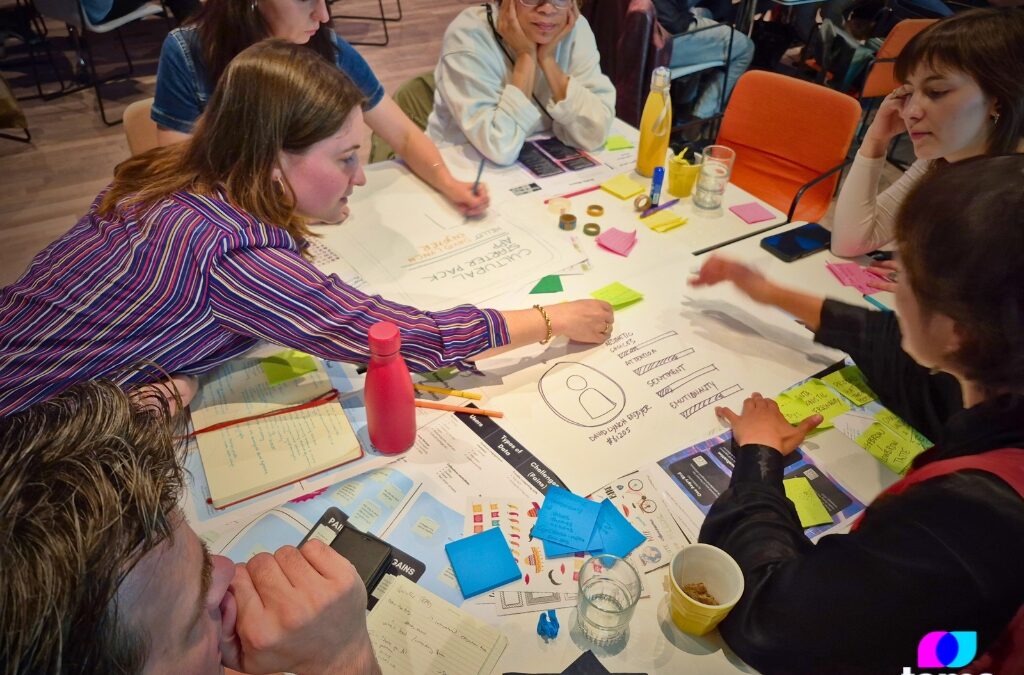We’ve said it before, and we’ll say it again: the media sector is sitting on an untapped goldmine of data. But how can the sector as a whole benefit from this mostly untouched gold? During the TEMS Speculative Design Session on 10 September 2025 at the Netherlands Institute of Sound & Vision, we set out to come up with some answers!
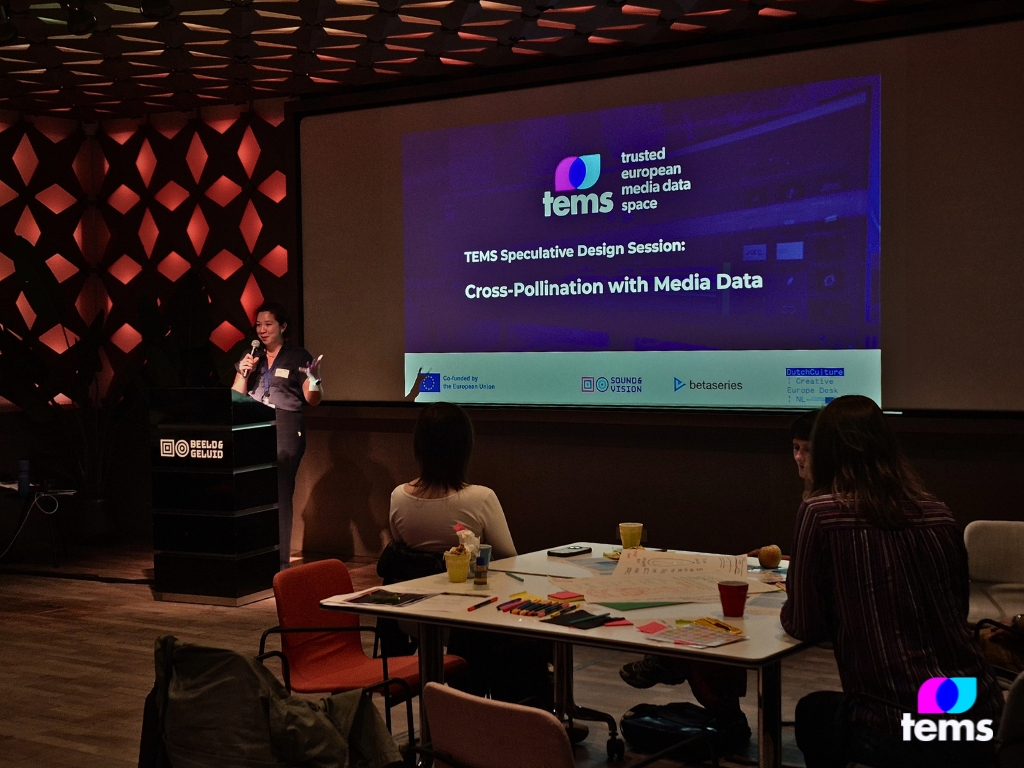
Kick-off
The day was kicked off with a warm welcome from Johan Oomen, Head of the Research & Heritage department of Sound & Vision. He briefly introduced us to the venue of the event: one of the largest digitised media archives in the world. Sound & Vision was previously involved in the development of Europeana – one of the first data spaces for cultural heritage. With this experience in mind, Sound & Vision now contributes to TEMS, as well as some other initiatives for European data spaces.
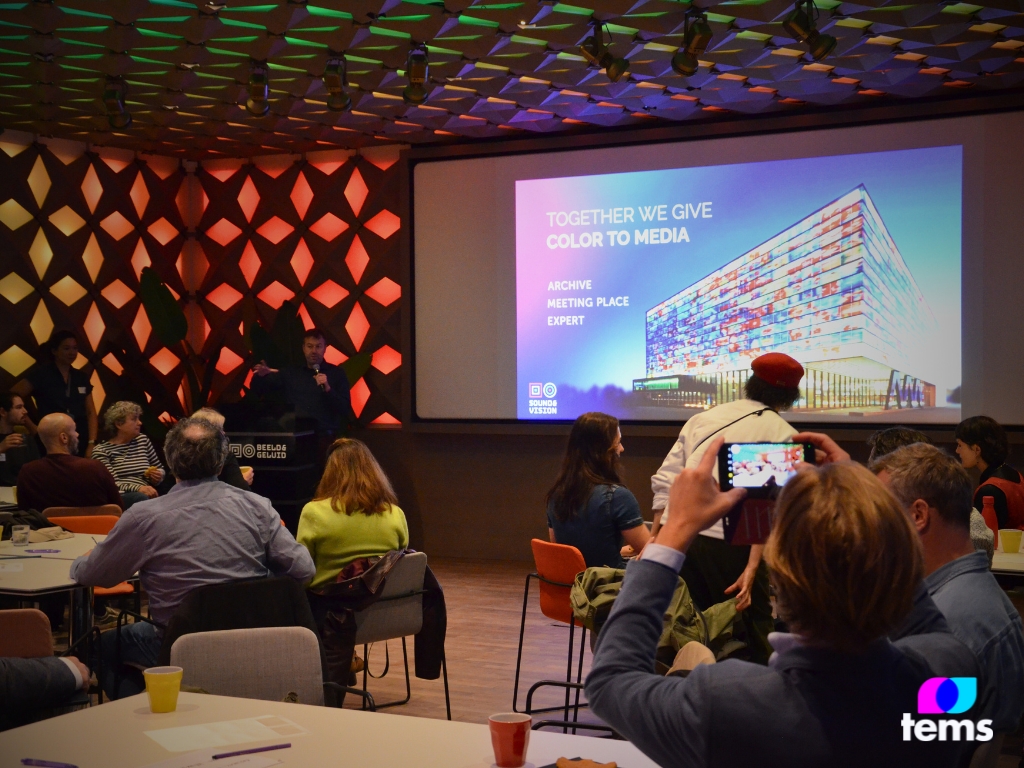
He was followed by Rajae el Morabet Belhaj, Advisor MEDIA at Dutch Culture | Creative Europe Desk NL. As a MEDIA advisor, Rajae helps creatives and industry professionals navigate funding opportunities within the Creative Europe programme that supports the entire audiovisual sector. The media landscape is constantly evolving, and Creative Europe Desk makes sure that diverse and innovative stories continue to find their way to audiences.
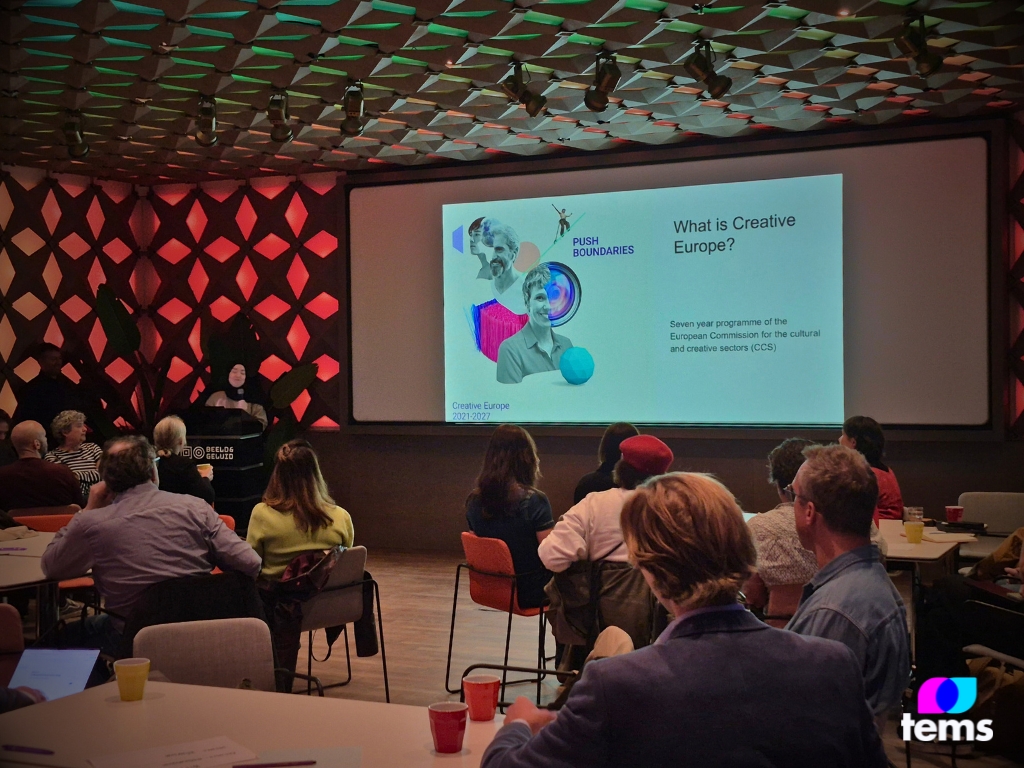
Getting up to speed with TEMS
Before diving into some inspiring examples, Johan got the audience up to speed about Europe’s strategy for data, data spaces and TEMS more specifically. Have you ever thought of a data space as a picnic? Well, from now on you will.
Johan elaborated on the four areas of focus of TEMS:
- Fact-checking & news exchange: interoperate with publishers, agencies and fact-checkers; enable new business models for content providers.
- Audience & ad analytics: analyse behaviour and performance to optimise ads and personalise UX.
- Syndication & rights management: standardise AV metadata during production to boost discoverability and secure rights/remuneration.
- VR & new formats: collect/exchange 3D data and produce virtual-production and gaming-based media.
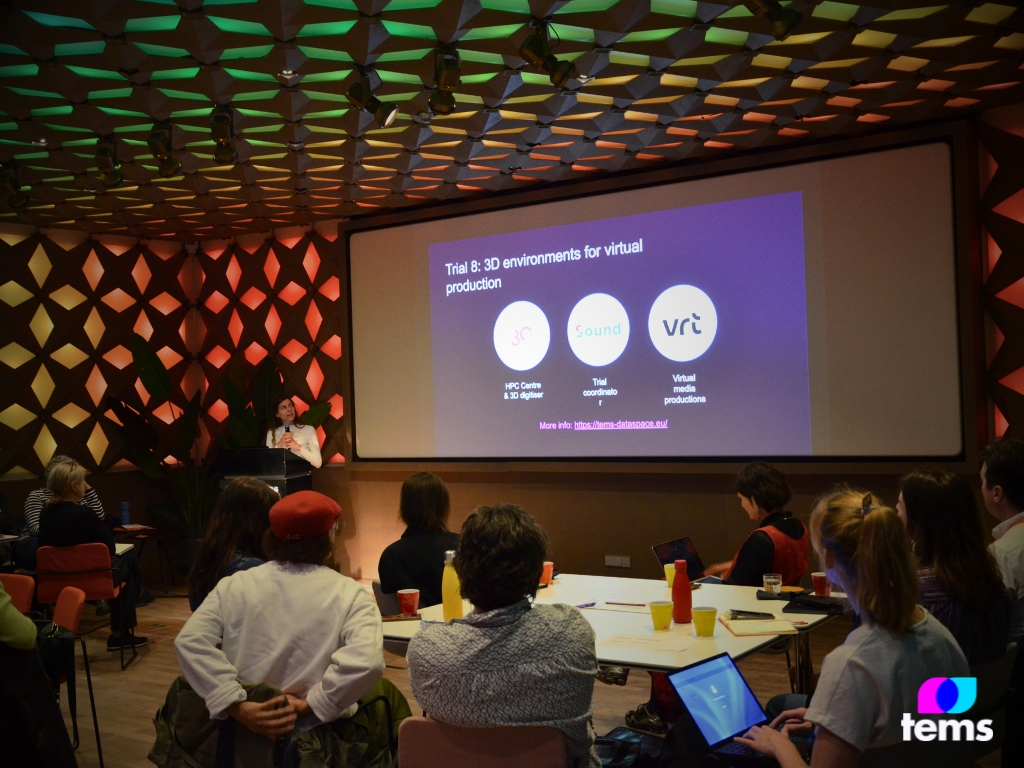
Seeds of Inspiration
After the welcoming words by Johan and Rajae and an introduction to TEMS, it was time to plant some seeds of inspiration in the minds of our audience. What is possible when sharing data across sectors? What are possible pitfalls, problems or issues? Dana Coppens, UX Researcher at VRT, presented TEMS Trial 8 – Market and co-creation place for 3D environments for virtual production – as the first example of what can be done when data is shared among media professionals. This tool within TEMS supports the development and re-use of innovative media formats in virtual production.
Second, Maxime Valette, founder of Betaseries, gave a presentation on the impact of AI developments within different CCIs, like music, gaming, visual arts and audiovisual media. Embeddings transform cultural content into mathematical “fingerprints” that capture meaning. As a web developer and entrepreneur from a very young age, Maxime has always been experimenting with new technologies, and he considers this embedding to be a cultural revolution. Betaseries’ AI technology is designed to index and analyse hundreds of hours of content and using AI models provides a new perspective on content.
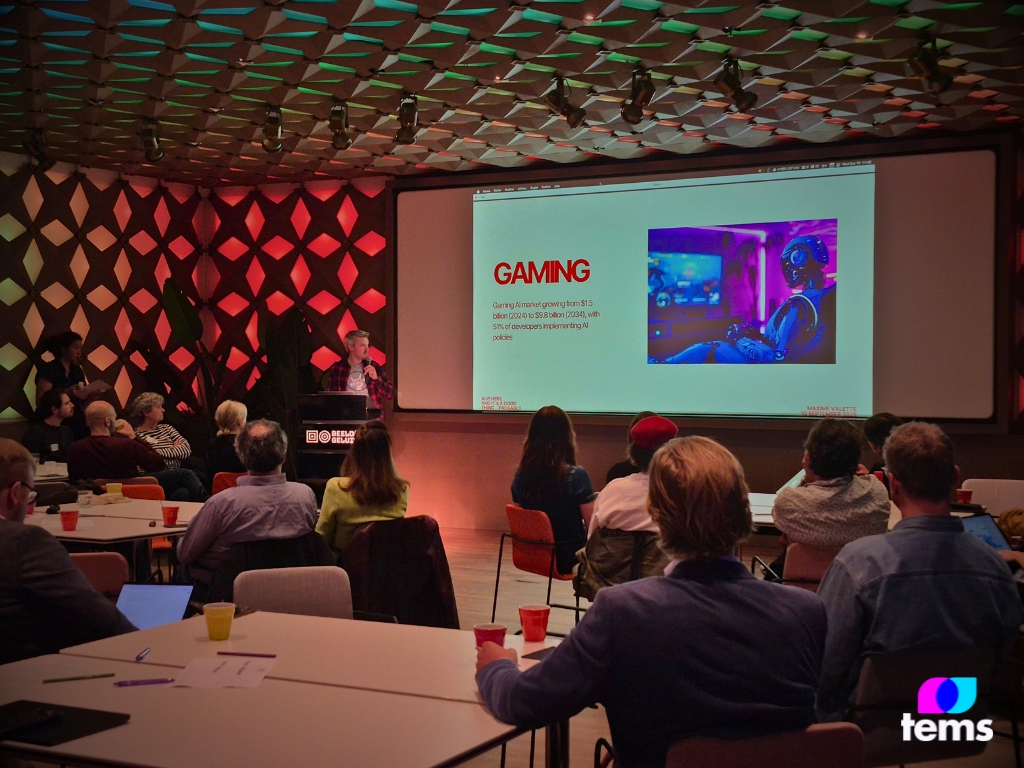
Get to work – speculating the use of data sharing
With the seeds of inspiration planted, the participants started with the interactive part of the session. Using so-called empathy maps, participants started brainstorming in pairs about possible users who might benefit from data-related insights or tools. Possible users might be professionals from within the media sector, like filmmakers, producers, broadcasters or publishers. Or end users of media products, looking for instance for cross-sectoral recommendations based on their previous media consumption. Some pairs came up with users outside of the media sector, like researchers or behavioural experts studying trends over years through media. The conclusion after this exercise: a cross-sectoral data space can be useful and interesting for a lot of different users.
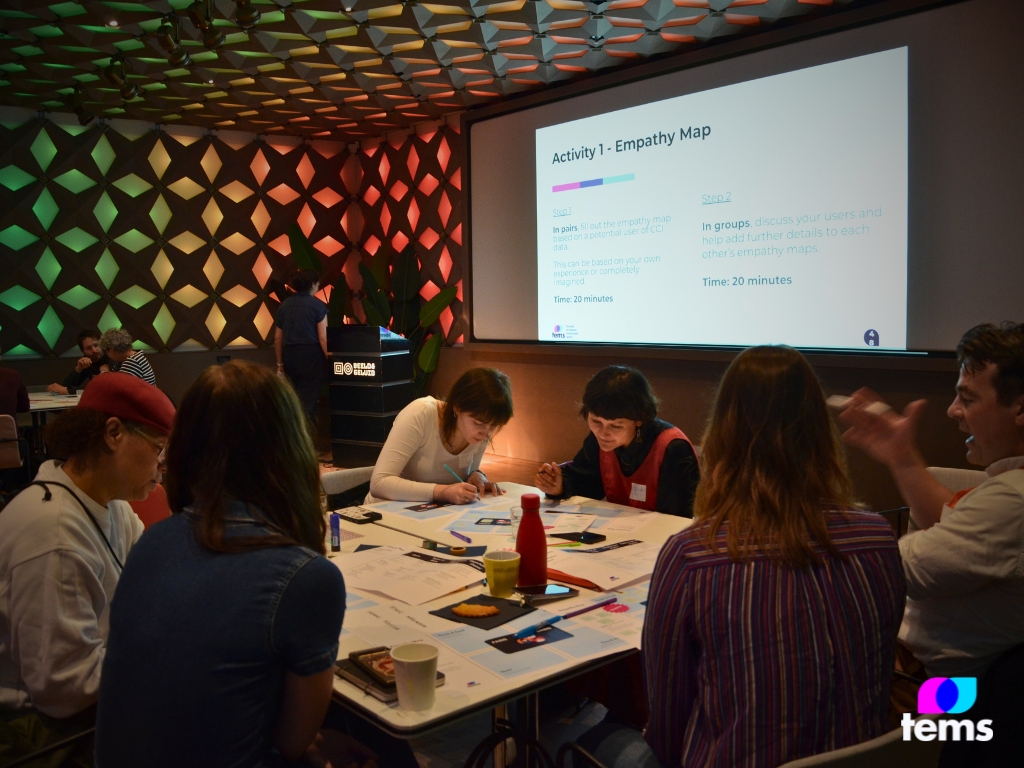
The pairs then mixed into groups, discussing the pains and gains each different user might have. A documentary maker, for instance, might be looking for beautiful AV material for a new film. The problem: where to start looking? What’s available? And if found, what are the rights for re-use? The list of pains can be endless. However, solutions are at hand as well. Think, for instance, of a catalogue within a data space with a high-quality search engine, providing an overview of what is available, where it can be found, and which rights and regulations are in place.
After finishing writing down the pains and gains for possible target audiences of a data space, the groups filled out a Discovery template, identifying specific questions or problems that can be tackled with data, and what kind of data is needed to solve it. Participants came up with useful fields for metadata, standardised identifiers for easier search, and much more.
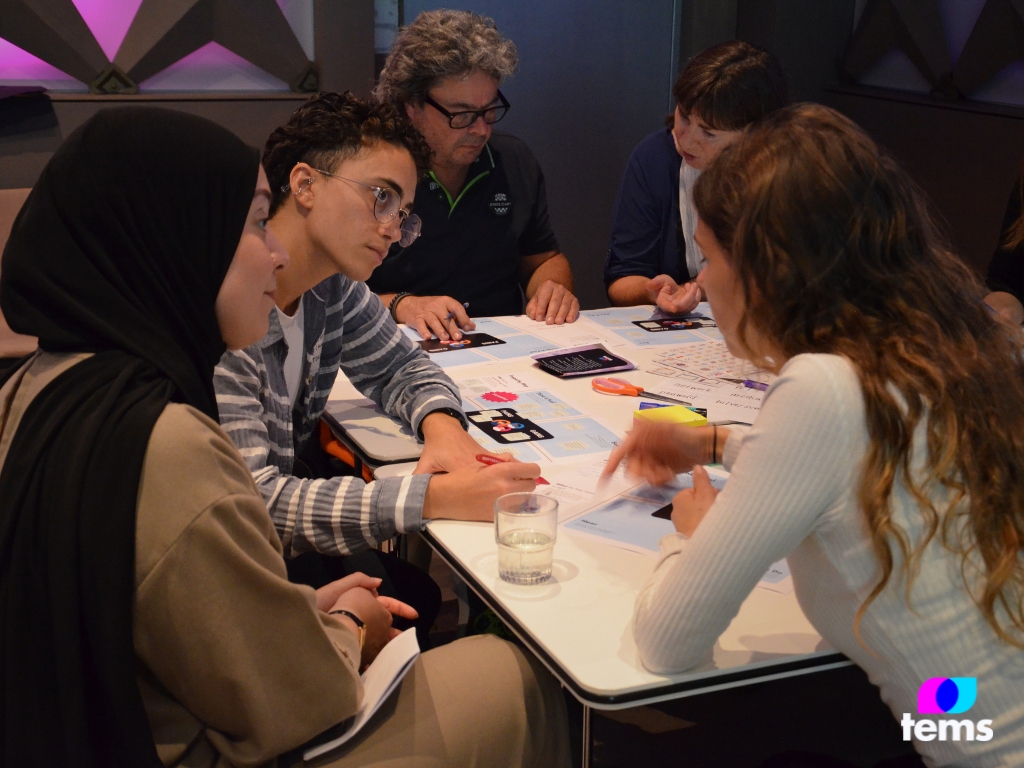
This was followed by the ideation stage, where the goal was to go from many ideas to one user with one problem, and develop a solution tailored to their needs. What data insights would save them time? What would help them identify new opportunities? How would the user interact with results from data analyses? What data visualisations would they want? With a set of guided questions, each team came up with a specific use case with a detailed value proposition, which they would then turn into a paper prototype.
Paper prototypes
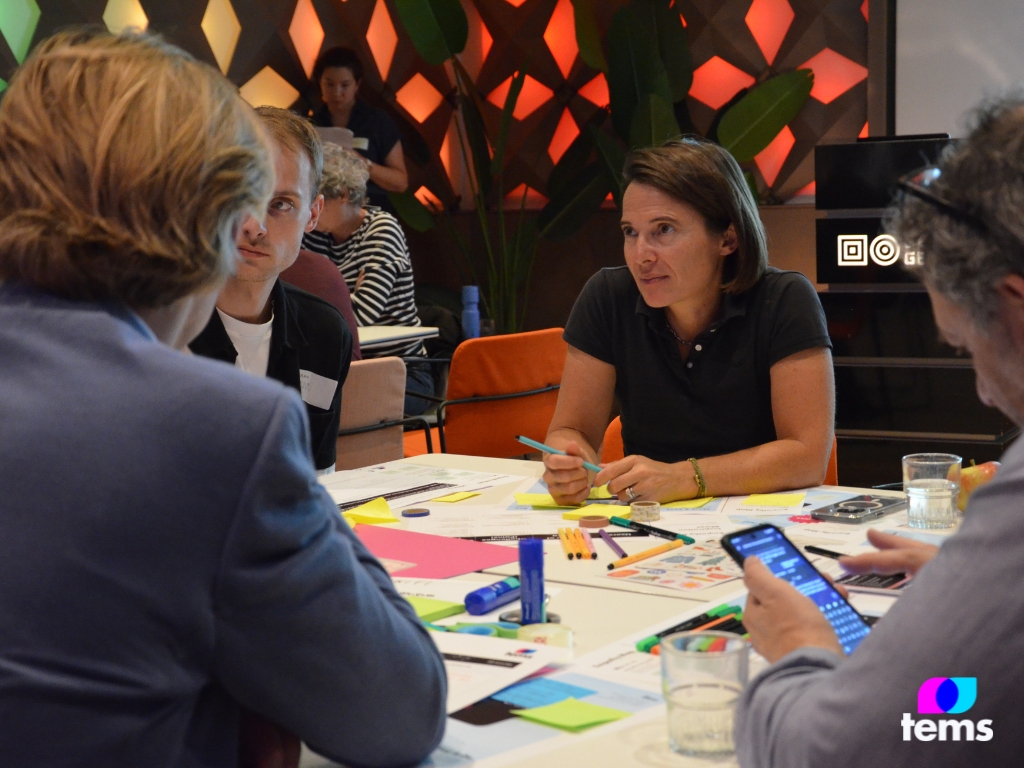
Tables full of post-its, stickers, washi tape, cardboard papers, pencils, glue, scissors and more, resulted in five beautiful paper prototypes:
- VR Aggregator Alligator – a use case centred around trends in VR, including an interactive digital tool with a VR Trend Timeline where producers and design studios can share insights, 3D models, good practices, and more.
- Uri: Bring the fun into funding! – a tool within a data space with a twofold audience: artists and funders. Where the classical funding model relies on artists submitting proposals, this tool takes a new approach, where artists can share their work and ideas (including lots of metadata!) in a data space, ready to be found and matched to multiple funding platforms within the blink of an eye.
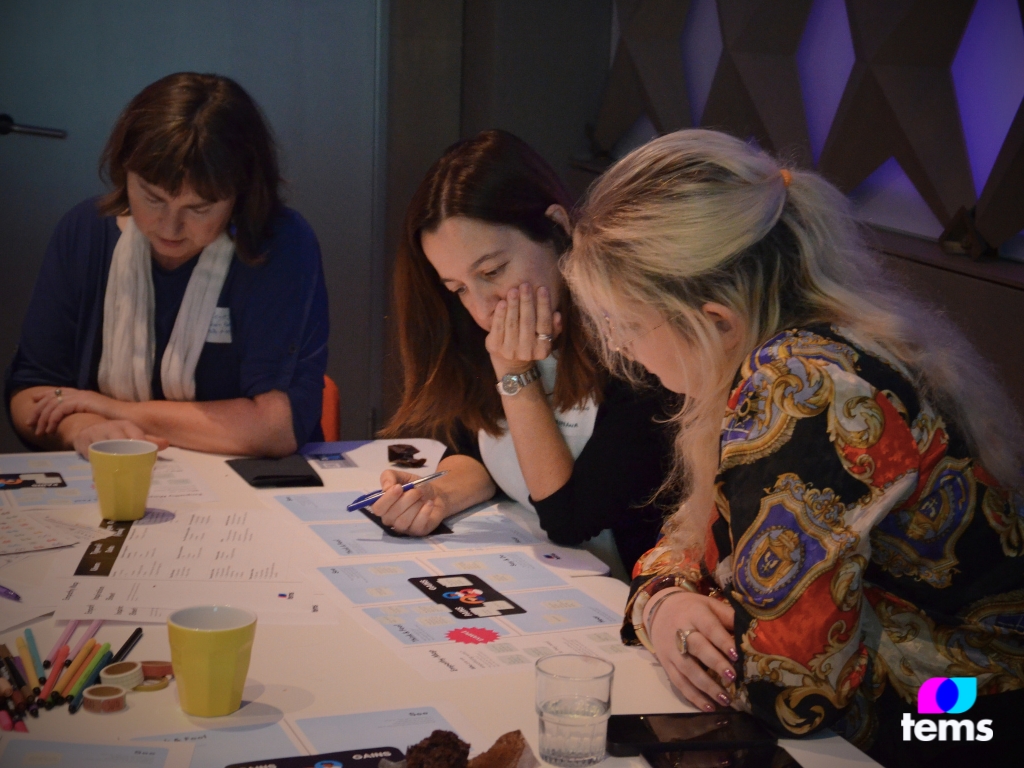
- Imbedding – a cloud-based model with personas for consumers, overruling the algorithms of big tech. Whereas big players like Netflix, Google and Amazon have all the power when it comes to audience trends, this innovative idea gives that power back to individuals, allowing them to create and curate personas for their media behaviour preferences, which will inform recommendations to any content from any sector tailored to their wishes.
- Cultural Starter App – a two-way channel app, both for producers as well as consumers. The idea here is that, for instance, theatre makers, game developers and broadcasters exchange audience data and insights, informing each other and giving cross-sectoral recommendations. “You liked that TV show? You might enjoy this opera as well!”
- Policies & recommendations – the last team didn’t come up with a prototype specifically, but more generally noted some very important thoughts and ideas related to policies and recommendations in order for data sharing to succeed.
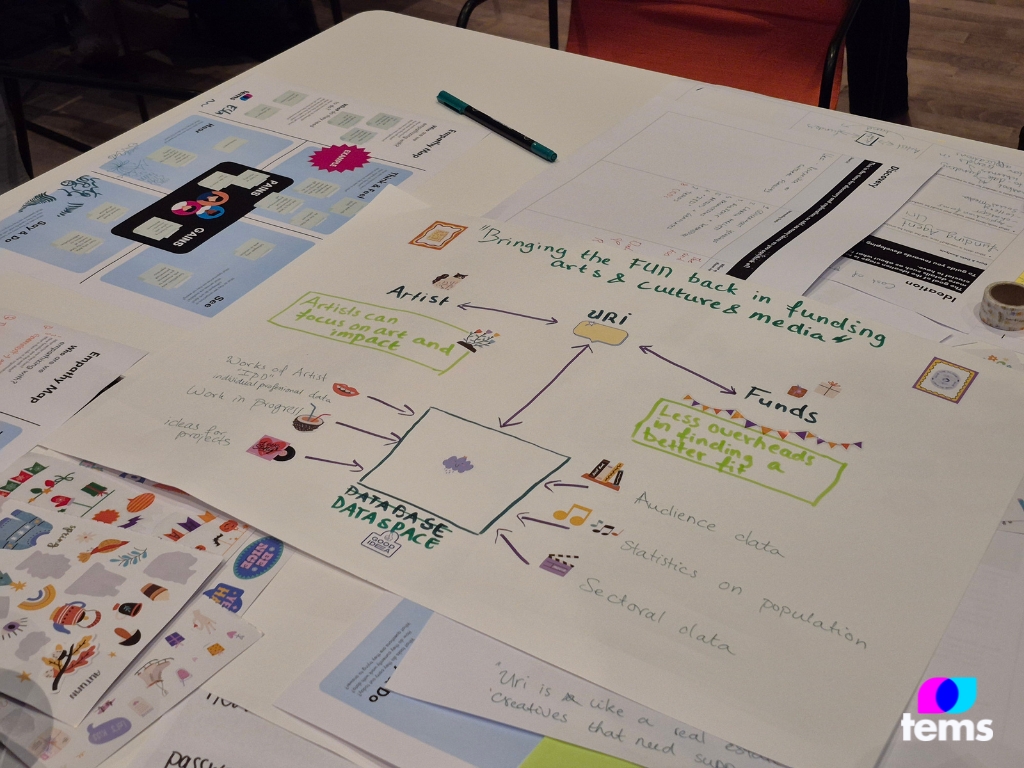
Closing words
With all those innovative and out-of-the-box ideas resulting in speculative designs, it was time to circle back to TEMS. Lucille Verbaere, Project Manager at the European Broadcasting Union for Technology and Innovation, gave an update on where TEMS is standing and how today’s insights will inform the data space in the near future.
Even after a long day of listening and collaborating, the audience remained engaged, and Lucille led a lively conversation about where TEMS stands now and where it will be heading in the future.
We look back on a very successful first event, bringing together data enthusiasts and sceptics alike, from a diverse range of sectors like gaming, film, broadcasting, performing arts and more, and can’t wait to see what comes next!
